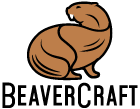How to Chip Wood by Hand: Basic Hand Positions for Chip Carving

Working on your chip carving project, you should remember to keep the correct position of your hand. Cutting out chips, hold your knife in the palm of your hand, the wood handle should be in the bend of an index finger, the blade should point the same way as your thumb. In order not to tire your hands quickly, keep a loose grip of the knife.
Standard chips with three or four sides.
This is the most common pattern in chip carving. You should hold your knife at the angle of 45 degrees to the surface and push the blade into the line, which is the side of the chip. All cuts should meet at the point below the center of the triangle or rectangle. You take the chip out with the last cut.

Straight-wall chips
Two sides of this chip will be vertical, and the deepest point of the chip will lie right below their intersection. The point of the knife should be placed right at this intersection when you cut each of the straight walls. Push your knife about 85 or 90 degrees to the wood while cutting them. The third side cut should meet with the first two at the deepest point of the chip and you take out the chip. If the third side of the chip is large and sloped more than in standard chips, you can use a detailed bench knife for cutting it. Lay it low and cut the slope towards the deepest point of the chip.
Curved-side chips
If the side of your chip is curved, and you come across this a lot while doing chip carving, you’ll have to try and change the angle of the blade to the wood while cutting the curved side. For example, in the middle of the line, your blade will be 45 degrees to the surface, while when you cut towards the end of the line the angle may drop to 30 degrees. To help you understand why this is so, imagine a straight line of the chip side in the place of the curved. If the side was straight, your knife would be pushed into the wood at 45 degrees. Now, the more real curve goes outside the imaginary triangle, the lower you should lay your knife to follow the line. Anyways, the point of your knife should be kept at the lowest point of the chip.

Free Form Chips
Free Form Chips make curved, V-shaped grooves. They occur in some chip carving patterns. The difference between them and other chip shapes is that the free forms have two sides, and do not have the deepest point, instead, they have the deepest line. However the procedure of cutting them is similar to cutting normal chips, only you cut along the curve and the tip of your knife goes along the deepest line. Where the figure goes wider, the angle of your blade to the surface will decrease, where the figure goes more narrow, the angle will increase up to 45 degrees (if the wall you are working on is not straight, of course).
The secret of the patterns
Every chip carving image consists of the positive space (the places of the design you cut) and the negative space (the places you don’t cut). The interplay of these spaces creates the chip carving image. The shadows play a huge part in the design, which is why chip carving is usually done on light-colored wood, to let the shadows have more contrast in the picture. Straight walls of the chip dramatically emphasize, or bring forward, the negative space above them, while inclined walls create gentle shadows.
Thus, chip carving pattern is not only a geometrical ornament. When you work with chip carving long enough, you learn to see the patterns and how to create them, how they will look better. For each figure in the pattern is assigned positive or negative space and the angle of the chip sides. This all creates wonderful chip carving patterns, and is the key to their beauty.
Author:

Roman Law
Wood carving guruFrom a childhood enchanted by nature, my passion for wood carving guided me on a path of creativity. With a pocket knife, I uncovered the transformative power of my hands, breathing life into driftwood and forging a lifelong connection with the medium.

